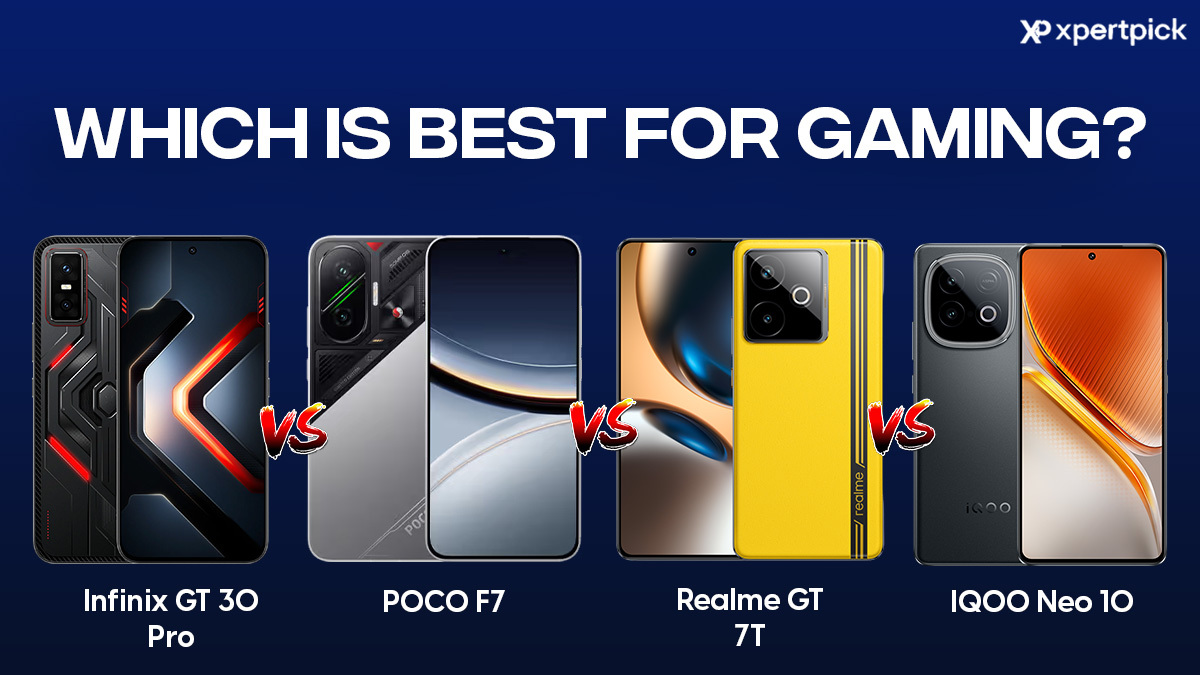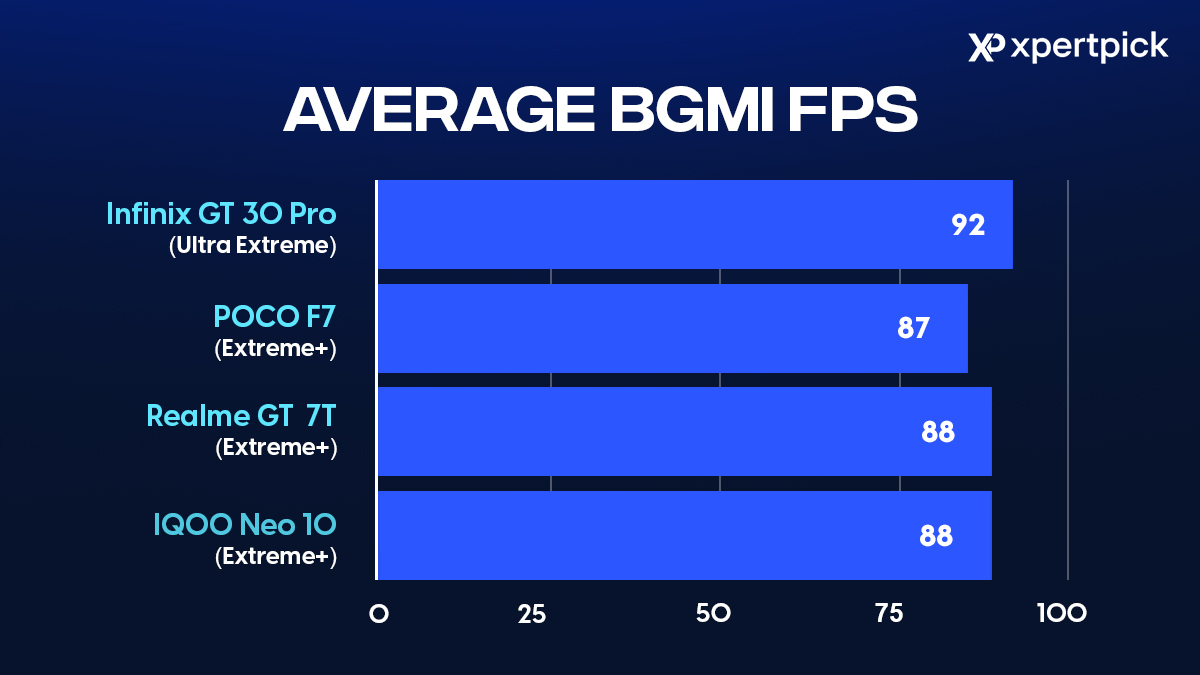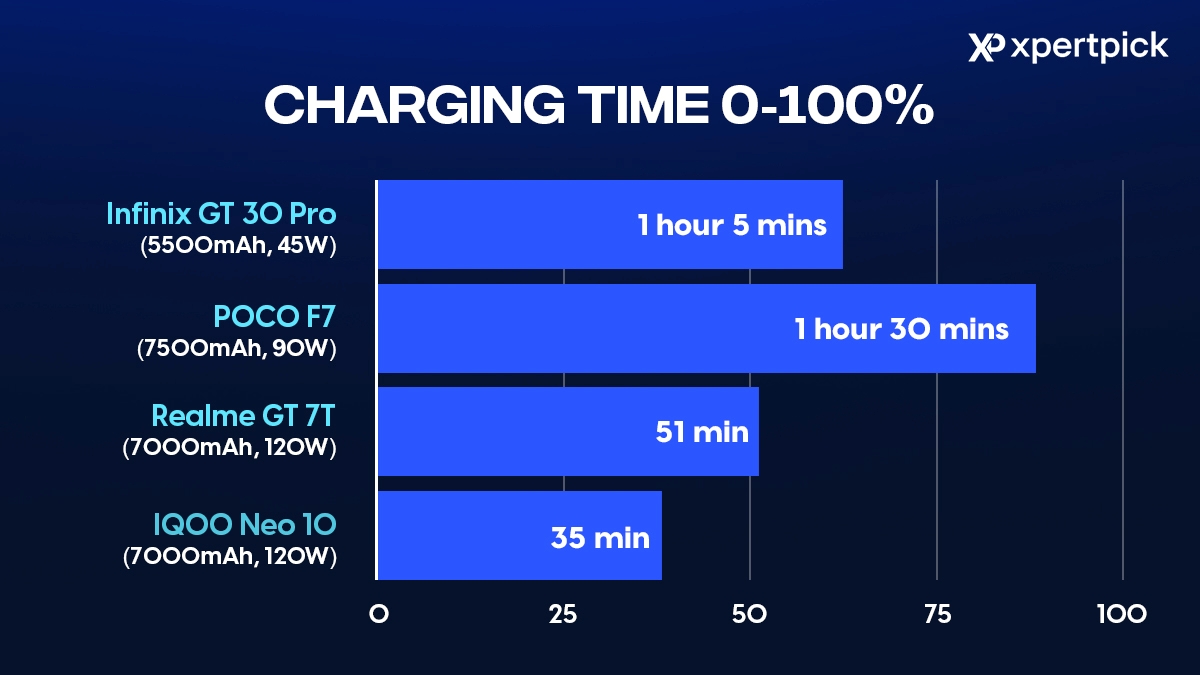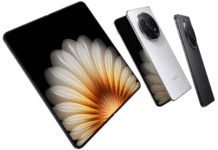
If you are a gamer, there’s never been a better time to buy a smartphone. Even mid-range and budget phones now support high frame rate gaming, making the experience more accessible than ever. The sub-Rs 40,000 segment in India has become the most competitive category, with powerful options such as the POCO F7, Infinix GT 30 Pro, Realme GT 7T, iQOO Neo 10, and many others.
But gaming today is not just about having a powerful processor. Devices like the Infinix GT 30 Pro have brought flagship-grade features such as air triggers at an affordable price, while the iQOO Neo 10 uses dual chips to boost gaming performance. We tested all four new devices to find out which among them offers the best gaming experience. Let’s dive in.
Gaming Performance: iQOO Neo 10 Takes The Lead
| Device | Processor | Max BGMI Settings Supported |
| Infinix GT 30 Pro | Dimensity 8350 Ultimate | Ultra Extreme (120 fps) |
| POCO F7 | Snapdragon 8s Gen 4 | Extreme+ (90 fps) |
| Realme GT 7T | Dimensity 8400 Max | Extreme+ (90 fps) |
| iQOO Neo 10 | Snapdragon 8s Gen 4 + Q1 chip | Ultra Extreme (120 fps) |
For this gaming test, we played BGMI on maximum supported settings on each device. The testing started with a few Team Deathmatch (TDM) matches, followed by 2-3 classic games. The overall gaming session was 2 hours. Here are the results:

- The iQOO Neo 10 provides an exceptional gaming experience with an average frame rate of 117 fps. There were no major frame dips, and the thermals also remained under control, offering a comfortable grip.
- The POCO F7, despite having the same processor as the iQOO Neo 10, does not support 120 fps in BGMI. It delivered an average of 87 fps, but the device feels warmer to the touch because of its metallic frame.
- The Realme GT 7T provided the most stable gaming experience of 88 fps, with no major frame drops in close combat fights. We did not notice any thermal throttling.
- Even though the Infinix GT 30 Pro supports 120 fps, the maximum frame rate was just around 95 fps. While the device delivered an average of 92 fps, we experienced some major frame drops in gunfights, especially after completing one hour of gaming.
To sum it up, the iQOO Neo 10 offers the best gaming experience with the highest frame rate. The POCO F7 disappointed as it lacks 120fps, and also needs better optimisation. The Realme GT 7T offers the most stable gaming experience, with minimal FPS fluctuation. The Infinix GT 30 Pro offers excellent performance for its price, but struggles to handle peak loads.
Note: The tests were conducted with screen recording enabled. This increases the chipset utilisation by 5-10%. Hence, you can expect the frame rate to be 4-5 fps higher in gaming without screen recording, in real-world usage.
Display Comparison: Infinix GT 30 Pro Has Best Value
- The Infinix GT 30 Pro has a 6.78-inch AMOLED screen with a 1.5K resolution and 144Hz refresh rate. The touch response from the screen feels better compared to using the air triggers. The 144Hz refresh is a good addition for smoother scrolling, but it provides no advantage in gaming as the game itself is limited to 120fps.
- The POCO F7 features a 6.83-inch AMOLED panel with a 120Hz refresh rate and 1.5K resolution. This screen has an excellent touch response. However, as the device runs comparitively hotter, the heat can be felt on the fingertips. After a while, some users may feel uncomfortable continuing to game, especially if they have a claw grip.
- The Realme GT 7T comes with a 6.8-inch AMOLED display with a 1.5K resolution and 120Hz refresh rate. The ArmorShell Glass has a strong oleophobic coating, which can take a while to get used to. The screen is impressive with its touch response, and we faced no input lag.
- The iQOO Neo 10 opts for a 144Hz refresh rate AMOLED panel with a 1.5K resolution. Compared to the Infinix GT 30 Pro, iQOO’s panel produces richer colours. The more powerful chip also generates smoother animations, and the touch input feels more responsive. Overall, this device offers the best display experience.
While the iQOO Neo 10 has the best experience, the Infinix GT 30 Pro comes fairly close. For its price, the value offered by Infinix is unbeatable. However, the 144Hz refresh rate on both phones only helps in scrolling through the user interface and longer lists in other apps, and has no impact on the gaming experience. Apart from the POCO F7, which has thermal issues, the other three phones provide a super-smooth screen interaction, delivering a seamless gaming experience.
Battery and Charging: iQOO Neo 10 Dominates
The charging time of a phone is a crucial factor for gamers, as nobody likes to keep waiting for too long just to get their phone back in action. We drained each device to 0% and charged them fully using the bundled charger. Here are the results:

- The POCO F7 has the largest battery with a 7550mAh capacity. It takes 1 hour and 30 minutes to charge fully.
- The Realme GT 7T has an impressive 7000mAh battery with 120W fast charging support. It takes just 51 minutes to complete a full charge. Hence, it offers a better balance between capacity and charging speeds, compared to the POCO F7.
- The Infinix GT 30 Pro features the smallest 5,500mAh battery on this list, paired with 45W fast charging. It takes 1 hour and 5 minutes for a full charge. These numbers are no match for its competition on this list.
- The iQOO Neo 10 dominates this round as it has the same 7,000mAh battery capacity and 120W fast charging. It completes a full charge in just 35 minutes, which is highly impressive for this capacity. It outperforms the Realme GT 7T, which has the same battery metrics.
The iQOO Neo 10 is a clear winner, thanks to its larger capacity and faster charging speeds. The Infinix GT 30 Pro does a decent job for its price, but fails to offer true competition in terms of battery. Realme GT 7T offers a good balance between battery capacity and charging speed. The POCO F7, although with the largest capacity, takes considerably longer to charge. The heating issues are also present during charging, which appears to be slowing the recharge speeds.
All four devices come bundled with a fast charger, so you don’t have to worry about purchasing it separately.
Verdict
If you’re looking for a gaming smartphone within a budget of Rs 30,000, the iQOO Neo 10 is the best choice. Priced at just Rs 31,999, it offers the best gaming experience with a stable frame rate, supports faster charging, and offers an impressive battery life.
The Realme GT 7T is slightly more expensive at Rs 34,999, but it is a reliable option. The specifications are similar to those of the iQOO Neo 10, including the camera setup. If you prefer Realme UI or ColorOS, then it’s worth considering, as we found no major flaws with the device.
The POCO F7 requires significant software optimization to resolve the heating issues that occur during gaming. Until these issues are resolved, it’s challenging to recommend this phone at Rs 31,999, given the strong competition.
The Infinix GT 30 Pro is the most affordable device on this list, priced at just Rs 24,999. It features a 144Hz screen and air triggers for gaming, both of which are rare in this segment. While it does not support true 120fps gaming, you can still enjoy a 90fps gaming experience on this phone.















